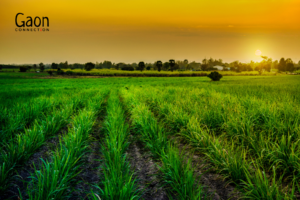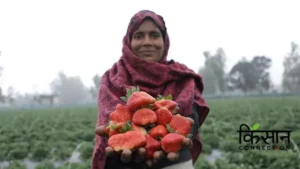The first few days of a chilli plant are crucial. It must be tended to carefully and often, chilli farmers spend a lot of money to ensure they are well protected by investing in polyhouses, etc.
No one knows that better than Rajib Bora, a 41-year-old farmer from Assam. Bora cultivates the famous bhut jolokia or ghost peppers, one of the hottest peppers in the world in an acre and a half of his land in Ghaghra Busti village in Gohpur district, in north east Assam, about 300 kms away from the state capital, Dispur.
Also Read: Green chilli farmers in the red
Bora developed an inexpensive method of protecting the young chilli plant from the harsh direct rays of the sun, and at the same time provide it enough moisture. Once he has planted the chilli plants straight out of the nursery, he places the layers of the banana stem alongside. This protects the chilli from direct sunlight and strong winds and allows it to take root unimpeded.
“Once you take care of the chillies for the first week or so, you can rest assured that they will be strong and healthy,” Bora told Gaon Connection. “The banana stems retain a lot of moisture in them and this is advantageous to the chilli plants,” Bora added.
The farmer said he had so far invested about Rs 60,000 on the chilli cultivation and he would have to spend more on it, but he felt the banana stem method of protecting his crop did save him some money.
Also Read: Portable polyhouse puts the smile back on faces of marginal farmers in the hills
“We cut the banana stem into smaller pieces and place them next to the chilli plant in such a way that while they receive the gentler early morning sunlight, they are protected from the harsher sunlight later in the day,” Bora explained.
The fiery Bhut Jolokia grows to about 40 to 120 cms and each chilli is usually about one and a half inches big, but can also grow up to three inches. The plant starts bearing fruit in about 75 to 90 days.
“In order to plant about five thousand bhut jolokia chilli seedlings, it costs about one lakh twenty five thousand rupees. Of course, not all the plants bear fruit and usually twenty per cent are written off,” Bora said. From the remaining plants, he said he could sell about Rs 800,000 worth of chillies. “So I can get a profit of about six lakh seventy five thousand rupees,” he said.
Bora, besides cultivating bhut jolokia, once also reared pigs. He had a pig farm with more than 300 pigs which were all lost to the African swine fever last year. Bora said he had no immediate plans to restart a pig farm and for now, his focus was entirely on his chilli cultivation.
Read the story in Hindi.



















